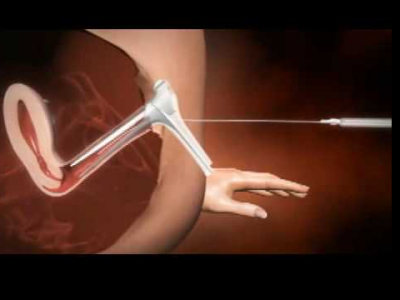Vacuoles in sperm
Large vacuoles observed in motile sperm under high magnification: nuclear fingerprints related to failures in chromatin condensation.
The ability to develop and implant an embryo can be improved if it is selected to microinject a sperm without vacuoles in the head. However, the nature of large vacuoles has not yet been fully studied. In this study, we will see if these vacuoles have a nuclear, membrane origin or come from the acrosome.
Fifteen sterile patients are studied using a contrast microscope with an increase of 10,000 x, 30 normal sperm are selected from each pair and another 30 with large vacuoles in the head that occupy more than 25% of the head area. In total, 450 normal spermatozoa ("top") and 450 vacuoles are studied.
The non-condensed chromatin rate was higher in vacuolated spermatozoa than in normal sperm (36.2% versus 7.6%). However, both had similar rates of DNA fragmentation and aneuploidy.
With these results it is suggested that the appearance of vacuoles has a nuclear origin, they are a trace related to failures in the chromatin condensation.
Below you have an index with all the points that we will discuss in this article.
Index- 1. Introduction
- 2. Material and methods
- 3. Results
- 4. Discussion
- 5. Bibliography
- 6. Authors and collaborators
Introduction
The quality of the sperm used in the microinjection (ICSI) affects the fertilization, the development and quality of the embryos and therefore, the implantation and pregnancy rates.
Thanks to new advances in reproduction, spermatozoa can be observed at a large microscopic magnification (6000-10000x) in order to select those with better morphology and without the presence of large vacuoles.
These spermatozoa without vacuoles or with less than two small vacuoles are related to better rates of blastocyst formation, implantation and pregnancy.
Nuclear originSpermatic vacuoles may be traces of some defect or anomaly in the process of spermatogenesis or sperm maturation, these can cause functional deficiencies such as failures in chromatin condensation, DNA damage, small acrosomes or immaturity of the plasma membrane of sperm .
Thanks to the examination of the morphology of mobile sperm organelles (MSOME) under a high magnification microscope, normal spermatozoa and vacuoles will be selected in this study to be compared nuclearly and to study the nature of these vacuoles.
It has been suggested that introducing the acrosome into the oocyte by microinjection can be detrimental to embryonic development. With this study, images of the acrosome and the sperm nucleus with and without vacuoles will be examined using a novel three-dimensional (3D) technique.
Material and methods
We studied 15 sterile men with normal karyotype and different types of seminal samples, according to the new criteria of the World Health Organization (WHO) and the Kruger criteria for sperm morphology (terarozoospermia, less than 15% normal sperm).
Five men were classified with normal seminal parameters, five with oligoasthenozoospermia and another five only with teratozoospermia.
Samples were prepared for sperm selection under high magnification (10000x) and subsequent nuclear evaluation. Two types of mobile sperm were selected for each patient:
- Sperm "top" (n = 30), are normal and mobile, especially with a normal head shape and size.
- Spermatozoids "vacuolated" (n = 30), differ from the "top" by the presence of a large vacuole in the head that occupies more than 25% of it.
All these sperm were examined by a triple procedure that includes the TUNEL and FISH test for X, Y and 18 chromosomes. The chromatin condensation, DNA fragmentation, was evaluated.
Also, the integrity of the plasma membrane was evaluated by means of AFM (high resolution scanning microscope) and for this, 10 top and 10 vacuolate spermatozoa were selected from each patient.
The morphological evaluation of the nucleus and the acrosome was carried out using a 3D microscope. This technique was used for 5 of the 15 patients and 20 normal sperm and 20 vacuolated sperm were studied from each patient.

Bibliography
Boitrelle F, Ferfouri F, Petit JM, Segretain D, Tourain C, Bergere M, Bailly M, Vialard F, Albert M, J Jungle. Large human sperm vacuoles observed in motile spermatozoa under high magnification: nuclear thumbprints linked to failure of chromatin condensation . Hum Reprod. 2011; 26 (7): 1650-8
Comments
Post a Comment